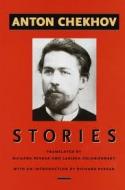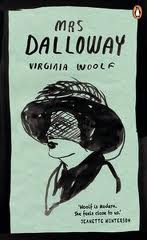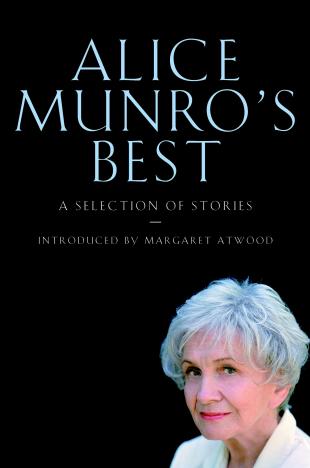Author Photo And Bio
 1. Stories of Anton Chekhov (1860–1904). The son of a freed Russian serf, Anton Chekhov became a doctor who, between the patients he often treated without charge, invented the modern short story. The form had been overdecorated with trick endings and swags of atmosphere. Chekhov freed it to reflect the earnest urgencies of ordinary lives in crises through prose that blended a deeply compassionate imagination with precise description. “He remains a great teacher-healer-sage,” Allan Gurganus observed of Chekhov’s stories, which “continue to haunt, inspire, and baffle.”
1. Stories of Anton Chekhov (1860–1904). The son of a freed Russian serf, Anton Chekhov became a doctor who, between the patients he often treated without charge, invented the modern short story. The form had been overdecorated with trick endings and swags of atmosphere. Chekhov freed it to reflect the earnest urgencies of ordinary lives in crises through prose that blended a deeply compassionate imagination with precise description. “He remains a great teacher-healer-sage,” Allan Gurganus observed of Chekhov’s stories, which “continue to haunt, inspire, and baffle.”
 2. Mrs. Dalloway by Virginia Woolf (1925). This masterpiece of concision and interior monologue recounts events in the life of Clarissa Dalloway, a delicate, upper-class London wife and mother, as she prepares for a party at her home on a single day in June 1923. In a parallel subsidiary plot, a shell-shocked World War I veteran Clarissa encounters spirals into suicide rather than submit to soul-stealing experimental psycho therapy. The novel explores questions of time, memory, love, class, and life choices through Woolf’s intricate melding of points of view and powerful use of flashback.
2. Mrs. Dalloway by Virginia Woolf (1925). This masterpiece of concision and interior monologue recounts events in the life of Clarissa Dalloway, a delicate, upper-class London wife and mother, as she prepares for a party at her home on a single day in June 1923. In a parallel subsidiary plot, a shell-shocked World War I veteran Clarissa encounters spirals into suicide rather than submit to soul-stealing experimental psycho therapy. The novel explores questions of time, memory, love, class, and life choices through Woolf’s intricate melding of points of view and powerful use of flashback.
 3. The Gate of Angels by Penelope Fitzgerald (1990). The year is 1912 and, it seems, reason is finally giving the heave-ho to faith. At least that’s what rector’s son turned Cambridge scientist Fred Fairly thinks, until a freakish bicycle accident connects him to the beautiful and mysterious Daisy Saunders. Though he has made a pledge of celibacy, he is now in love and so must puzzle the questions of chaos and order, fate, chance, and the wonders of the soul in this funny, sharp novel of ideas.
3. The Gate of Angels by Penelope Fitzgerald (1990). The year is 1912 and, it seems, reason is finally giving the heave-ho to faith. At least that’s what rector’s son turned Cambridge scientist Fred Fairly thinks, until a freakish bicycle accident connects him to the beautiful and mysterious Daisy Saunders. Though he has made a pledge of celibacy, he is now in love and so must puzzle the questions of chaos and order, fate, chance, and the wonders of the soul in this funny, sharp novel of ideas.
 4. The Rings of Saturn by W. G. Sebald (1995). An idiosyncratic chronicle of a walk along England’s eastern coast, this novel moves between physical encounters and prolonged meditations on history and memory. As the narrator visits derelict estates and slumbering villages, he ponders among other things Thomas Browne’s skull, Rembrandt’s Anatomy Lesson, Conrad’s journey into the heart of the Congo, the battle of Waterloo, and a villager’s model of Herod’s temple. Seemingly unrelated, the sketches weave a strange tapestry of grief, tranquility, nostalgia, and despair.
4. The Rings of Saturn by W. G. Sebald (1995). An idiosyncratic chronicle of a walk along England’s eastern coast, this novel moves between physical encounters and prolonged meditations on history and memory. As the narrator visits derelict estates and slumbering villages, he ponders among other things Thomas Browne’s skull, Rembrandt’s Anatomy Lesson, Conrad’s journey into the heart of the Congo, the battle of Waterloo, and a villager’s model of Herod’s temple. Seemingly unrelated, the sketches weave a strange tapestry of grief, tranquility, nostalgia, and despair.
 5. Disgrace by J. M. Coetzee (1999). Fifty-two years old and twice divorced, Professor David Lurie thought the affair with his student might bring passion back to his life. Instead, it costs him his job and his friends when he refuses to repent his sin. He retreats to his daughter’s farm, hoping to build on their relationship and write about Byron. But his tranquil oasis is shattered by racial violence in this uncompromising novel by the South African Nobel laureate.
5. Disgrace by J. M. Coetzee (1999). Fifty-two years old and twice divorced, Professor David Lurie thought the affair with his student might bring passion back to his life. Instead, it costs him his job and his friends when he refuses to repent his sin. He retreats to his daughter’s farm, hoping to build on their relationship and write about Byron. But his tranquil oasis is shattered by racial violence in this uncompromising novel by the South African Nobel laureate.
 6. Persuasion by Jane Austen (1817). Eight years ago, Anne Elliot was persuaded by a friend to break off her engagement to a handsome naval officer because he lacked wealth and name. Now twenty-seven, her romantic prospects a dim memory, she encounters him once again, only now he is a grand success. Can she rekindle his love?
6. Persuasion by Jane Austen (1817). Eight years ago, Anne Elliot was persuaded by a friend to break off her engagement to a handsome naval officer because he lacked wealth and name. Now twenty-seven, her romantic prospects a dim memory, she encounters him once again, only now he is a grand success. Can she rekindle his love?
 7. Stories of Alice Munro (1931– ). A master of the small epiphany, the moment of clarity, Alice Munro writes of men and women who struggle to reconcile the lives they have made with their sometimes confused longings. Largely set in urban and rural Canada, Munro’s stories feature characters whose inner lives gradually peel away to reveal themselves in all their richness and complexity. Munro’s plots do not forge ahead in a linear fashion, but loop and meander and take their time getting where they need to go, slowly revealing their characters and revealing what lies behind the choices they have made.
7. Stories of Alice Munro (1931– ). A master of the small epiphany, the moment of clarity, Alice Munro writes of men and women who struggle to reconcile the lives they have made with their sometimes confused longings. Largely set in urban and rural Canada, Munro’s stories feature characters whose inner lives gradually peel away to reveal themselves in all their richness and complexity. Munro’s plots do not forge ahead in a linear fashion, but loop and meander and take their time getting where they need to go, slowly revealing their characters and revealing what lies behind the choices they have made.
 8. Jane Eyre by Charlotte Brontë (1847). Like Wuthering Heights, this is a romance set in the isolated moors of rural England the Brontës called home. Its title character is an exceptionally independent orphan who becomes governess to the children of an appealing but troubled character, Mr. Rochester. As their love develops, the author introduces a host of memorable characters and a shattering secret before sending Jane on yet another arduous journey.
8. Jane Eyre by Charlotte Brontë (1847). Like Wuthering Heights, this is a romance set in the isolated moors of rural England the Brontës called home. Its title character is an exceptionally independent orphan who becomes governess to the children of an appealing but troubled character, Mr. Rochester. As their love develops, the author introduces a host of memorable characters and a shattering secret before sending Jane on yet another arduous journey.
 9. The Member of the Wedding by Carson McCullers (1946). Twelve-year-old Frankie Addams’s summer has been routine until her brother, set to be sent to the battlefields of World War II, announces he is getting married. As the family’s cook Berenice says, Frankie falls “in love with the wedding.” McCuller’s evocation of a 1940s Georgia town in August will make you sweat, but Frankie’s desperation to connect with somebody sticks in your head like a sad, crazy tune.
9. The Member of the Wedding by Carson McCullers (1946). Twelve-year-old Frankie Addams’s summer has been routine until her brother, set to be sent to the battlefields of World War II, announces he is getting married. As the family’s cook Berenice says, Frankie falls “in love with the wedding.” McCuller’s evocation of a 1940s Georgia town in August will make you sweat, but Frankie’s desperation to connect with somebody sticks in your head like a sad, crazy tune.
10. Break It Down by Lydia Davis (1986). Through crisp, propulsive sentences laced with knowing irony, Davis plunges readers into various streams of consciousness in her debut collection. Ideas rather than action animate these thirty-four stories —some no more than a paragraph long, most set in a character’s racing, obsessive mind. “I’m going to break it all down,” says the man in the title story, trying to calculate the cost of his last love affair. Like most Davis characters, he finds more questions than answers. And like most Davis characters, he is drawn with such empathy that he pulls the reader into his madness. Only when we take a step back can we laugh, deeply, at the absurdity of it all.